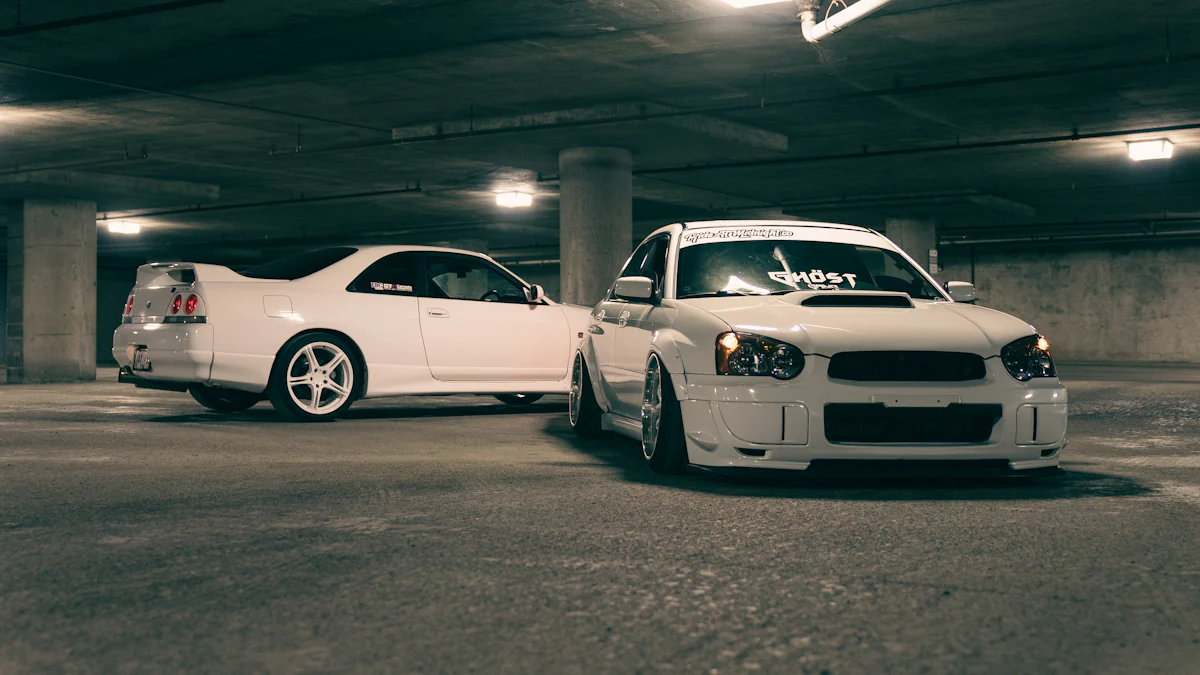Personal Finance: Buying a Used vs New Car

When it comes to personal finance, your car-buying decision can have a big impact. Are you wondering how to choose whether to buy a new or used car? It’s not always an easy choice. Buying a new car might feel exciting, but it often comes with a hefty price tag. On the other hand, buying a used car could save you money upfront, but it might require more maintenance. Your budget, priorities, and long-term goals all play a role in this decision. Understanding these factors can help you make the right choice for your financial future.
Key Takeaways
New cars cost more at first but may have discounts.
Used cars cost less but might need more repairs later.
New cars lose value fast in the first few years.
Used cars keep their value better as time goes on.
Insurance for new cars costs more because they are worth more.
Used cars usually have cheaper insurance than new ones.
Think about your money and goals before picking a car.
Cost Comparison

Upfront Costs
New Cars: Higher purchase price but potential incentives.
When you buy a new car, you’re paying a premium for that fresh-off-the-lot experience. On average, new vehicles cost $47,542, which is significantly higher than the $27,177 average price of used cars. That’s a difference of over $20,000! However, manufacturers often offer incentives like cashback deals or low-interest financing to sweeten the deal. These perks can help reduce the initial purchase cost, but the higher price tag still means larger monthly payments.
Used Cars: Lower purchase price but possible immediate repairs.
Buying a used car is easier on your budget upfront. With a lower initial purchase price, you’ll likely need a smaller loan, which means lower monthly payments. But keep in mind, used cars might require immediate repairs or maintenance. While these costs can add up, they’re often still less than the price difference between new and used vehicles. A thorough inspection before buying a used car can help you avoid unexpected expenses.
Depreciation
New Cars: Rapid value loss in the first few years.
New cars lose value quickly. In fact, vehicle depreciation is steepest during the first three years. For example, a car worth $48,000 at purchase might drop to $27,744 after three years—a loss of over $20,000. This rapid depreciation means you’re essentially paying for the car’s declining value during the early years of ownership.
Used Cars: Slower depreciation, better value retention.
Used cars depreciate at a slower rate. Since the initial depreciation has already occurred, you’re buying the vehicle at a more stable value. This makes buying a used car a smarter choice if you’re looking to minimize the cost over the life of ownership. Plus, well-maintained used cars often retain their value better than new ones.
Financing and Interest Rates
New Cars: Lower interest rates but higher loan amounts.
Financing a new car often comes with lower interest rates. For example, buyers with a prime credit score might secure a rate as low as 6.7%. However, because new cars are more expensive, you’ll likely need a larger loan. The average loan term for new cars is about 68.48 months, which means you’ll be paying off that higher amount for a longer time.
Used Cars: Higher interest rates but smaller loans.
Used-car loans typically have higher interest rates. For instance, a prime credit score might get you a 9.63% rate for a used car. But since the loan amount is smaller, the total interest paid over the life of the loan is often less. The average loan term for used cars is slightly shorter at 67.41 months, which can help you pay off the loan faster.
Long-Term Financial Implications
Maintenance and Repairs
New Cars: Covered by warranties, fewer early repairs.
When you buy a new car, you’re getting the peace of mind that comes with a manufacturer’s warranty. Most new vehicles come with coverage for at least three years or 36,000 miles, sometimes even longer. This means you won’t have to worry about unexpected repair costs during those early years. Plus, new cars are less likely to need major maintenance right away since all the parts are brand-new. If reliability and fewer trips to the mechanic are important to you, a new car might be worth considering.
Used Cars: May need more repairs, but parts are cheaper.
Buying a used car can save you money upfront, but you might face higher maintenance costs down the road. Older vehicles often require more frequent repairs, especially if they haven’t been well-maintained. However, the good news is that parts for used cars are usually cheaper and easier to find. Regular maintenance, like oil changes and tire rotations, can help keep your used car running smoothly and prevent costly repairs. A thorough inspection before buying a used car can also help you avoid major issues.
Insurance Costs
New Cars: Higher premiums due to replacement costs.
Insuring a new car typically costs more. Why? Several factors come into play:
New cars have a higher initial value, which increases insurance premiums.
Advanced technology and electronics in new vehicles can be expensive to repair or replace.
New cars are often targeted for theft or vandalism, which insurers factor into their rates.
While some advanced safety features in new cars might qualify you for discounts, the overall cost of insuring a new vehicle is still higher than a used one.
Used Cars: Lower premiums, but fewer safety features.
Used cars generally cost less to insure. Their lower market value means replacement costs are cheaper, which translates to lower premiums. However, older vehicles may lack modern safety features like lane assist or automatic braking. While this could increase risk, the savings on insurance often outweigh the downsides. If you’re looking to save on monthly expenses, a used car might be the better choice.
Resale Value
New Cars: Significant depreciation in the first few years.
New cars lose value quickly. Within the first three years, a new vehicle can depreciate by as much as 40%. This means if you decide to sell or trade it in, you’ll likely get much less than what you paid. Depreciation is one of the biggest financial downsides of buying a new car, so it’s something to keep in mind if resale value is important to you.
Used Cars: Retain value better if purchased wisely.
Used cars hold their value better over time, especially if you choose one with low mileage and a solid maintenance history. Regular upkeep can also help maintain its resale value. For example, a well-maintained used car with 50,000 miles will likely fetch a higher price than one with 100,000 miles and visible wear and tear. If you’re strategic about buying a used car, you can minimize depreciation and get more value when it’s time to sell.
Lifestyle and Personal Considerations

Reliability and Peace of Mind
New Cars: Reliable with no prior history.
When you buy a new car, you’re getting a clean slate. There’s no previous owner, no hidden surprises, and no questionable car history. Everything is brand-new, from the engine to the tires. This reliability can give you peace of mind, especially if you’re someone who doesn’t want to worry about unexpected breakdowns. Plus, new vehicles often come with warranties that cover repairs for several years, so you can drive with confidence.
Used Cars: Potential issues, but inspections help.
Buying a used car can feel like a gamble, but it doesn’t have to be. A used car inspection can uncover potential problems before you commit. These inspections ensure the vehicle is safe and well-maintained, addressing reliability concerns. They also identify issues early, preventing minor problems from turning into costly repairs. If you’re considering buying a used car, an inspection is a must to protect your investment and your peace of mind.
Environmental Impact
New Cars: Better fuel efficiency and eco-friendly features.
New cars often come with advanced technology that improves fuel efficiency and reduces emissions. For example, newer models can significantly cut down on the 4.6 metric tons of CO2 that the average vehicle emits annually. However, manufacturing a new car generates about 5.6 tons of CO2, along with waste and energy consumption. While driving a fuel-efficient car helps the environment, the production process still has a considerable impact.
Used Cars: More sustainable by reducing manufacturing demand.
Buying a used car is a more sustainable choice. It reduces the demand for new production, which generates waste and consumes energy. Since the environmental cost of manufacturing has already been paid, choosing a pre-owned vehicle helps conserve natural resources and lowers carbon emissions. If sustainability is a priority for you, a used car aligns better with eco-friendly goals.
Aligning with Personal Financial Goals
Budget: Choosing a car that fits your financial plan.
Your auto budget plays a big role in deciding between a new or used car. New cars come with higher upfront costs, which can strain your finances. On the other hand, a used-car budget is easier to manage, with lower purchase prices and smaller loans. By considering the total cost of ownership, including insurance and maintenance, you can choose a vehicle that fits your financial plan without compromising your savings.
Long-Term Priorities: Balancing cost with lifestyle needs.
Your long-term priorities should guide your decision. If you value the latest technology and warranties, a new car might be worth the higher cost. But if you’re focused on savings and avoiding steep depreciation, buying a used car makes more sense. A used vehicle lets you get more for your money, like a higher-spec model for the same price as a new, lower-spec one. Think about what matters most to you—whether it’s cost, features, or reliability—and make a choice that supports your goals.
Choosing between a new or used car depends on what matters most to you. A new car offers reliability, cutting-edge features, and peace of mind with warranties. However, it comes with a higher price tag and faster depreciation. On the other hand, a used car is more budget-friendly, with lower upfront costs and slower value loss. But it might require more maintenance and could have hidden issues.
Think about your financial goals, lifestyle, and priorities. Do you want the latest technology, or are you looking to save money? Weigh the pros and cons carefully. Whether you go for a new or used car, the right choice is the one that fits your needs and keeps your finances on track.
See Also
Navigating Risk And Return For Intelligent Investment Choices
The Importance Of Starting Your Finances Early In Life
January Mortgage Trends: Expect Lower Rates This Year

